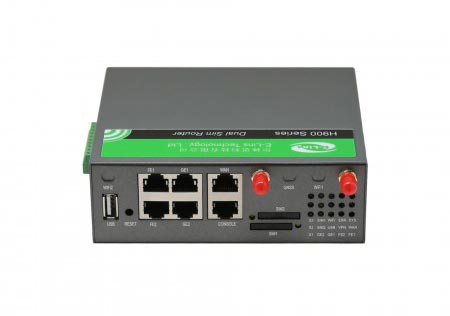How does a dual SIM router work?
Feb 29,2024 | Views: 234
In the era of fast-paced connectivity demands, the dual SIM 4G router stands as a pivotal solution, offering enhanced reliability and seamless connectivity. But what exactly powers this technological marvel?
1. Dual SIM Functionality: Bridging Networks Effortlessly
At the heart of a dual SIM 4G router lies its dual SIM functionality. This feature allows the device to accommodate two SIM cards from different network providers simultaneously. By doing so, it ensures uninterrupted connectivity by seamlessly switching between networks based on signal strength and availability.
2. Intelligent Network Management: Ensuring Optimal Performance
One of the key mechanisms employed by dual SIM routers is intelligent network management. Through sophisticated algorithms, these routers continuously monitor network conditions and intelligently switch between SIM cards to maintain optimal performance. This dynamic management ensures a smooth browsing experience, even in areas with fluctuating network coverage.
3. Load Balancing: Maximizing Bandwidth Efficiency
Load balancing is another critical aspect of dual SIM router operation. By distributing data traffic across both SIM cards, these routers maximize bandwidth efficiency and minimize congestion. This results in faster speeds and reduced latency, particularly during peak usage hours when network traffic is high.
4. Failover Protection: Mitigating Downtime Risks
To mitigate the risks associated with network outages or SIM card failures, dual SIM routers are equipped with failover protection mechanisms. In the event of a primary network failure, the router automatically switches to the secondary SIM card, ensuring uninterrupted connectivity. This redundancy feature is especially crucial for businesses and remote operations where downtime can lead to significant losses.
5. Application Flexibility: Adapting to Diverse Use Cases
From enterprise setups to remote deployments and mobile applications, dual SIM 4G routers offer unparalleled flexibility. Whether it's providing internet access to remote sites, establishing backup connections for critical systems, or ensuring connectivity on the go, these routers excel in diverse use cases, making them indispensable tools in today's hyper-connected world.
In conclusion, the operational prowess of dual SIM 4G routers lies in their ability to seamlessly bridge networks, intelligently manage connectivity, and adapt to dynamic network conditions. By harnessing dual SIM functionality, intelligent network management, load balancing, and failover protection, these routers empower users with reliable and uninterrupted connectivity, regardless of the challenges posed by the network environment.
As businesses and individuals increasingly rely on connectivity for productivity and communication, the importance of robust networking solutions like dual SIM routers cannot be overstated. By understanding the mechanics behind their operation, users can leverage these devices to unlock the full potential of seamless connectivity in today's digital landscape.
Prev: High-Speed Connectivity: Szelins' 5G Modem Routers
Next: Does dual 4G allow 4G connectivity for both SIM slots?
1. Dual SIM Functionality: Bridging Networks Effortlessly
At the heart of a dual SIM 4G router lies its dual SIM functionality. This feature allows the device to accommodate two SIM cards from different network providers simultaneously. By doing so, it ensures uninterrupted connectivity by seamlessly switching between networks based on signal strength and availability.
2. Intelligent Network Management: Ensuring Optimal Performance
One of the key mechanisms employed by dual SIM routers is intelligent network management. Through sophisticated algorithms, these routers continuously monitor network conditions and intelligently switch between SIM cards to maintain optimal performance. This dynamic management ensures a smooth browsing experience, even in areas with fluctuating network coverage.
3. Load Balancing: Maximizing Bandwidth Efficiency
Load balancing is another critical aspect of dual SIM router operation. By distributing data traffic across both SIM cards, these routers maximize bandwidth efficiency and minimize congestion. This results in faster speeds and reduced latency, particularly during peak usage hours when network traffic is high.
4. Failover Protection: Mitigating Downtime Risks
To mitigate the risks associated with network outages or SIM card failures, dual SIM routers are equipped with failover protection mechanisms. In the event of a primary network failure, the router automatically switches to the secondary SIM card, ensuring uninterrupted connectivity. This redundancy feature is especially crucial for businesses and remote operations where downtime can lead to significant losses.
5. Application Flexibility: Adapting to Diverse Use Cases
From enterprise setups to remote deployments and mobile applications, dual SIM 4G routers offer unparalleled flexibility. Whether it's providing internet access to remote sites, establishing backup connections for critical systems, or ensuring connectivity on the go, these routers excel in diverse use cases, making them indispensable tools in today's hyper-connected world.
In conclusion, the operational prowess of dual SIM 4G routers lies in their ability to seamlessly bridge networks, intelligently manage connectivity, and adapt to dynamic network conditions. By harnessing dual SIM functionality, intelligent network management, load balancing, and failover protection, these routers empower users with reliable and uninterrupted connectivity, regardless of the challenges posed by the network environment.
As businesses and individuals increasingly rely on connectivity for productivity and communication, the importance of robust networking solutions like dual SIM routers cannot be overstated. By understanding the mechanics behind their operation, users can leverage these devices to unlock the full potential of seamless connectivity in today's digital landscape.

 Networking
Networking EMBEDDED SYSTEMS
EMBEDDED SYSTEMS Switches
Switches Wireless Solutions
Wireless Solutions Industrial Computer
Industrial Computer Cloud Services
Cloud Services




